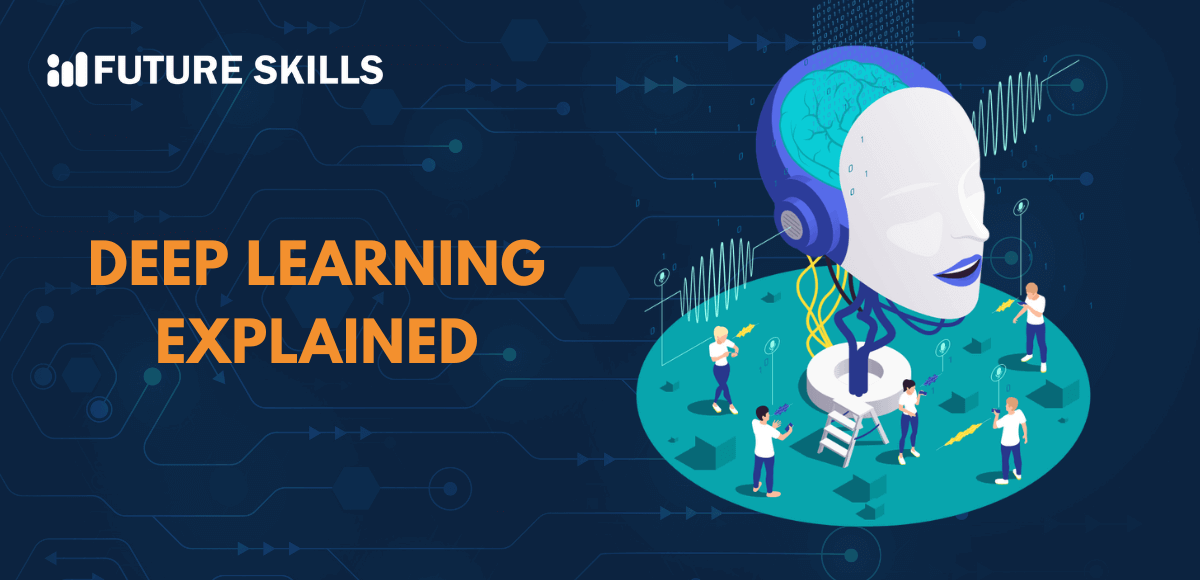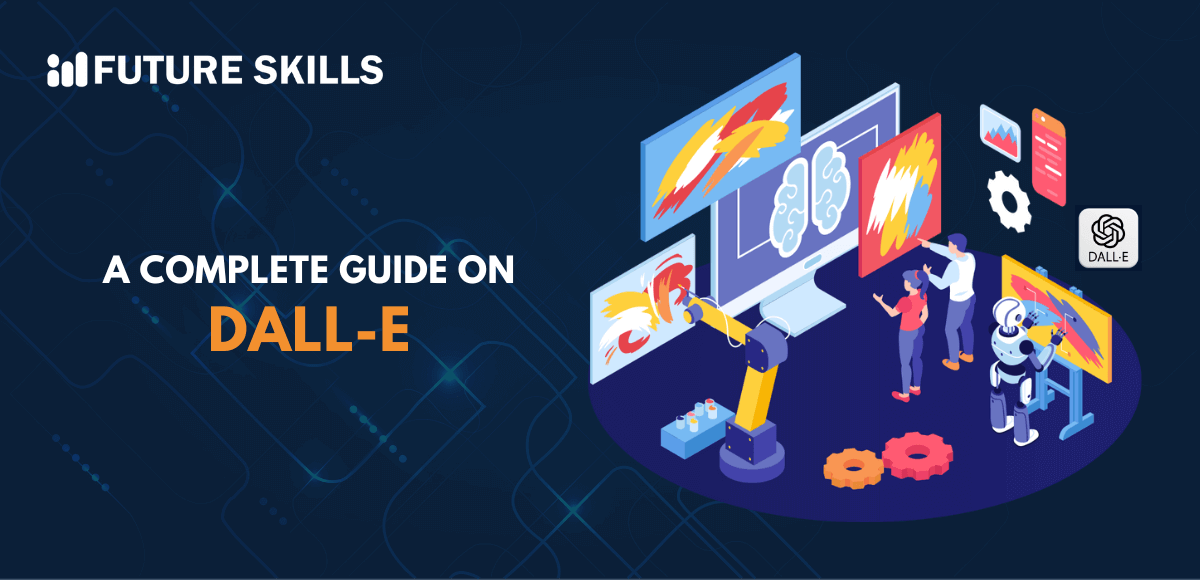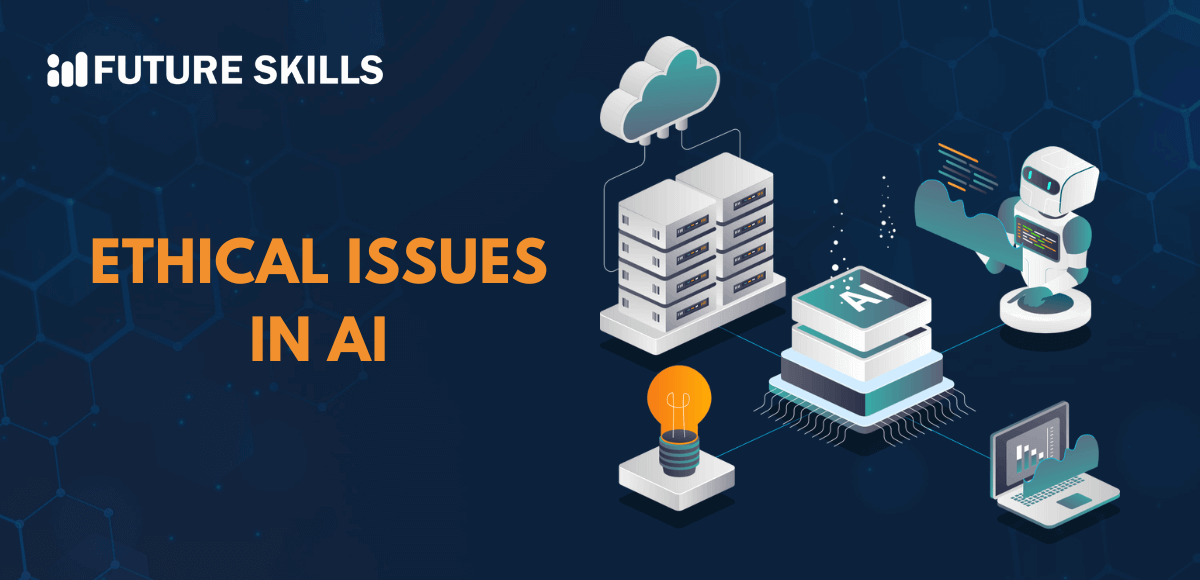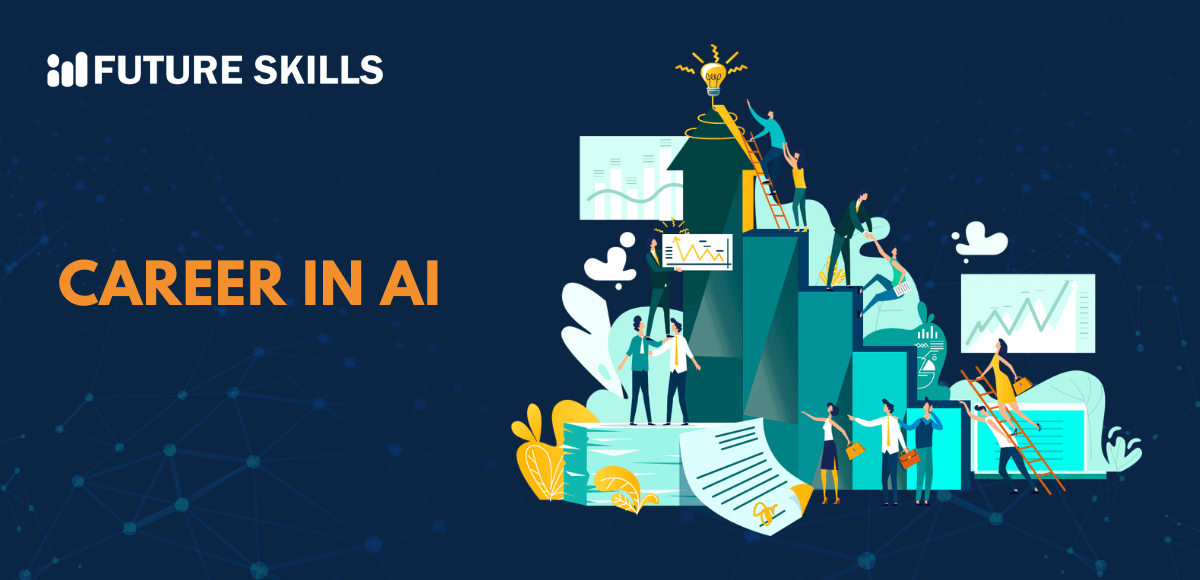The rising prominence of AI in the world has been one of the major highlights of technological innovation in recent decades. Many of us must have thought that we would never witness AI-powered systems in real life as it may be a thing of the distant future. Interestingly, artificial intelligence has become an integral part of our everyday lives in different ways. On top of it, AI is continuously evolving with advancements in machine learning and deep learning techniques for different applications. Deep learning is one of the notable subdomains of machine learning dedicated to simulation of human-like intelligence in machines. The effectiveness of deep learning revolves around its working principle that focuses on replicating how the human mind works.Just like the neurons in our mind, deep learning leverages deep neural networks to achieve the complex decision-making capabilities of the brain.
The outline of deep learning explained for beginners focuses on the different layers of deep neural networks that can achieve different tasks. Deep learning serves as the foundation for different applications and services that can improve automation and perform analytical tasks without human intervention. Let us learn more about how deep learning works, importance of deep learning, and its different uses.
Uncovering the Meaning of Deep Learning
Deep learning is one of the most talked about terms in the world of AI right now. The curiosity regarding queries like ‘What is deep learning in AI?’ has been increasing as AI evolves further. Deep learning is an important subdomain of machine learning that trains machines to perform tasks by learning from different examples.
The learning process is quite similar to that of humans. For example, if you want to teach a computer how to recognize dragons in images, you don’t have to ask it to look for scales, horns, and wings. On the contrary, you would feed it thousands of images of dragons. The machine would then identify the common patterns on its own and learn how to recognize dragons.
The workings of deep learning definitely sound magical in some ways. From a technical perspective, the working mechanism of deep learning revolves around neural networks. The networks are designed like the human brain, with multiple layers of interconnected nodes for information processing. A neural network becomes ‘deeper’ with the growth in a number of layers. Multiple layers enable neural networks to learn complex features and work on sophisticated applications.
Build ChatGPT skills and take the first step to becoming superhuman with our free ChatGPT and AI fundamental Course
Why has Deep Learning Gained Popularity?
Deep learning has become a crucial industry standard in the domain of AI for its unique capabilities. The advantages of deep learning for managing large repositories of data, including unstructured data, have enhanced its utility. It can help in training models on unstructured data, thereby reducing time and resources for standardization of datasets. With the help of GPUs, deep learning models can support the processing of large amounts of data at scale.
Deep learning models also have the capability to automatically detect all types of patterns with high accuracy. As a matter of fact, deep learning models are trusted picks to ensure accuracy in results of natural language processing, audio processing, and computer vision tasks.
Excited to understand the crucial requirements for developing responsible AI and the implications of privacy and security in AI, Enroll now in the Ethics of Artificial Intelligence (AI) Course
What are the Building Blocks of Deep Learning?
You need a comprehensive understanding of the foundational concepts of deep learning to understand deep learning algorithms and applications. The best way to understand different types of deep learning applications would be through awareness of crucial building blocks of deep learning. Here is an overview of the foundational elements that build deep learning.
-
Neural Networks
Neural networks are the core entities that power deep learning models. They are actually computational models made of interconnected nodes, similar to neurons of the brain. The nodes work in unison to process information and make decisions. Neural networks have multiple layers for distinct functions, and the brain has different regions for specific tasks.
-
Deep Neural Networks
The discussions about deep learning techniques also invite attention to deep neural networks. Neural networks become ‘deep’ when they have more layers between the output layer and input layer. Deep neural networks have multiple layers, which allow them to learn the more complex features and arrive at accurate predictions. As a matter of fact, the depth of neural networks gives the characteristic name to deep learning alongside the power to resolve intricate issues.
-
Activation Functions
With information flowing in as inputs and sensible outputs coming from deep learning models, it is reasonable to wonder about the factors that help deep learning models carry out different tasks so easily. You can pick up any deep learning example and find out the ways in which activation functions help deep learning models make accurate predictions and decisions. Activation functions are responsible for deciding which information must be passed to the next layer. The functions introduce complexity in deep learning and help the network learn from data to make informed decisions.
Enroll now in the AI for Business Course to understand the role and benefits of AI in business and the integration of AI in business.
Simplest Explanation for Working Mechanism of Deep Learning
The next crucial highlight you need to understand deep learning is its working mechanism. One of the notable aspects of deep learning explained for beginners is the multi-layered nature of deep neural networks. Deep learning works by leveraging feature extraction to identify features with the same label.
Subsequently, it utilizes decision boundaries to find the features that serve as an accurate representation of each label. For example, deep learning models can differentiate images of cats and dogs by extracting information like the body shape, eyes, face, and tail of the animals and classifying them into two groups.
It is important to note that a simple neural network would include an input layer and an output layer alongside one hidden layer. Deep neural networks feature multiple hidden layers that help in improving the accuracy of the model. Each layer serves a distinctive function when working with deep learning models.
Input layers contain the raw data fed to deep learning models, and their primary responsibility is to transfer the raw data to nodes on the hidden layer.
Nodes in the hidden layers categorize the data points according to the broader target information. With multiple hidden layers, the data points are narrowed down further to come up with accurate predictions.
Finally, the output layer leverages information from hidden layers to choose the most accurate label. For example, deep learning models can generate accurate predictions for a dog’s image as compared to that of a cat.
Embark on a transformative journey into AI, unlocking career-boosting superpowers through our Certified AI Professional (CAIP)™ Certification program.
What are the Different Variants of Deep Learning?
The guides to deep learning must also focus on the different types of deep learning to understand the range of functionalities you can achieve with deep learning. You can classify deep learning models according to the type of deep neural networks or techniques they use. Interestingly, research and innovation in the domain of deep learning can lead to the development of new types of deep neural networks.
Common deep learning techniques leverage tools such as convolutional neural networks, generative adversarial networks, recurrent neural networks, and long- and short-term memory networks.
Convolutional Neural Networks or CNNs are useful for computer vision with specialization of initial layers to extract unique features from images. Subsequently, a more traditional neural network can process the features of an image to classify them.
Another popular term you might find in answers to “What is deep learning in AI?” is Generative Adversarial Networks. GANs are useful for generating new data, such as videos, images, and text. Generative Adversarial Networks have two competing neural networks known as the generator network and the discriminator network. The generator creates synthetic data, and the differentiator works to find the difference between synthetic and real data.
Recurrent Neural Networks, or RNNs, are common choices for natural language processing tasks. They feature in-build feedback loops that pass data output from one layer to the previous layer, thereby adding memory to the network.
Speaking of memory, Long Short-term Memory Networks or LSTMs are the ideal picks for fraud detection. LSTMs are powerful tools to capture long-term dependencies in sequences.
What are the Real-World Applications of Deep Learning?
Most of the guides to deep learning also point out the potential of deep learning to change our lives through different real-world applications. Interestingly, you cannot identify every deep learning example, as deep learning has been integrated so well into products and services. It is practically impossible for an individual to determine the scale of data processing that happens in the background of deep learning applications. Here are some of the notable applications of deep learning in the real world.
-
Financial Services
One of the most prominent sectors that leverages the advantages of deep learning is finance. For example, financial institutions leverage predictive analytics to support algorithmic stock trading and assessment of business risks for approving loans. In addition, financial institutions utilize deep learning to manage investment portfolios or detect fraud.
-
Healthcare
Deep learning has also led to innovative advancements in the domain of healthcare beyond the digital transformation of healthcare records and medical images. For example, image recognition applications based on deep learning can help in faster and more accurate analysis of medical images. It can lead to better anomaly detection in X-rays, CT scans, or MRI images.
-
Customer Service
Deep learning also serves as a major tool for powering customer service to the next level of excellence. The applications of deep learning explained with respect to customer service would focus primarily on chatbots. Sophisticated AI chatbots can use deep learning to expand the functionalities of chatbots. As a result, businesses can find a new method for personalized engagement with users.
Does Deep Learning Have Any Limitations?
Before you look for new possibilities to leverage deep learning, it is important to identify its limitations. One of the foremost setbacks of deep learning techniques is the requirement for massive amounts of data. It can lead to the need for a large amount of computing power, thereby increasing the cost of training and hardware. You might have to invest in expensive hardware, such as GPUs.
On top of it, deep neural networks also experience other challenges during the training process. For example, the exploding gradients and vanishing gradient problem can influence gradient-based learning methods. You would also need time for hyperparameter tuning to avoid the concerns of overfitting and ensure effective deep-learning implementations.
Final Words
The introduction to deep learning provides a clear impression of its potential to revolutionize the domain of AI. Interestingly, the fundamentals of deep learning are more than the responses to queries like “What is deep learning in AI?” and focus on variants of deep learning.
In addition, you have to pay attention to the different foundational concepts when working on deep learning. You can expand your understanding of deep learning by discovering more information about deep learning frameworks, deep learning concepts, and their applications. Identify the credible learning resources to familiarize yourself with the concepts and deep learning right away.





